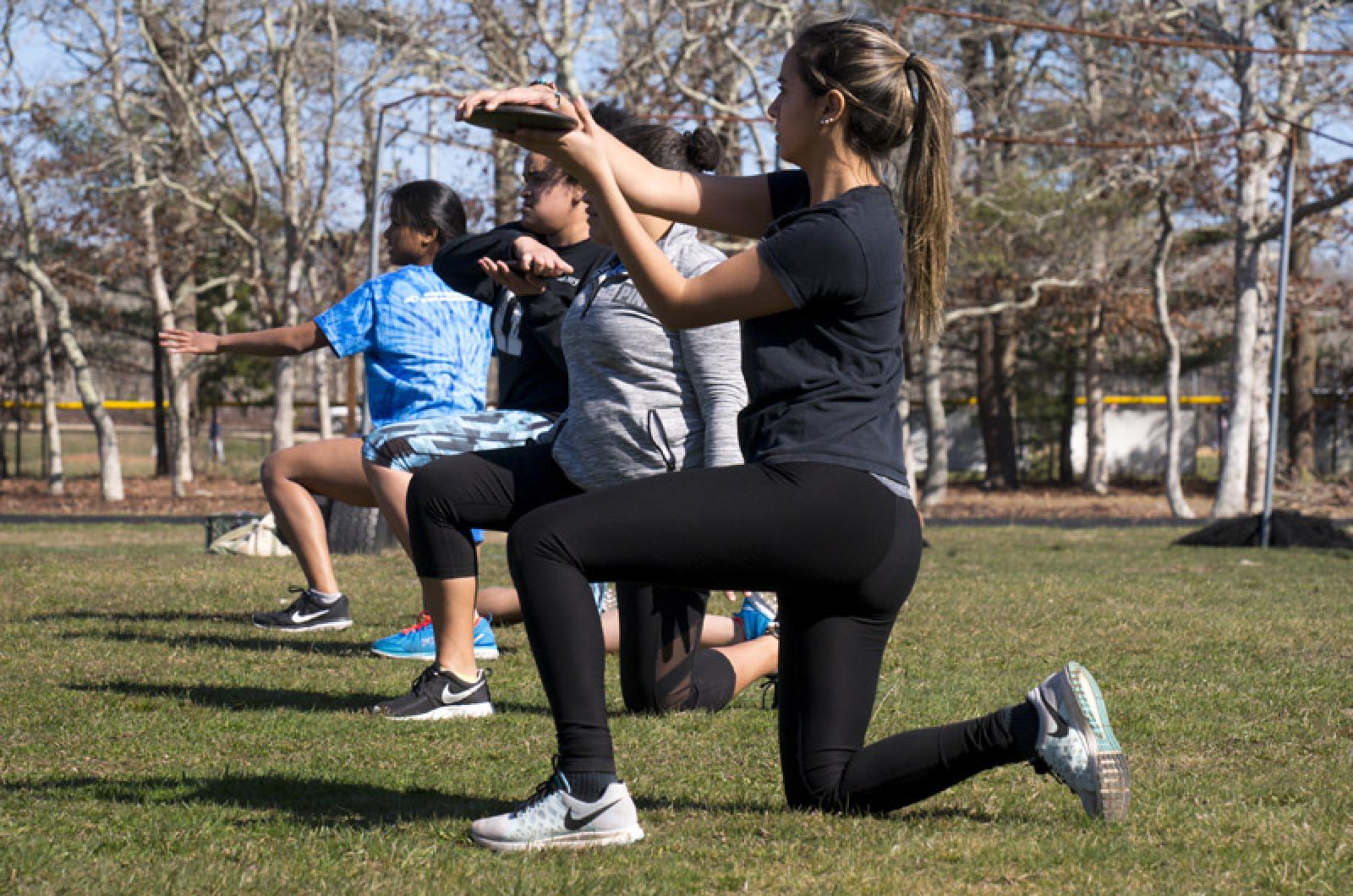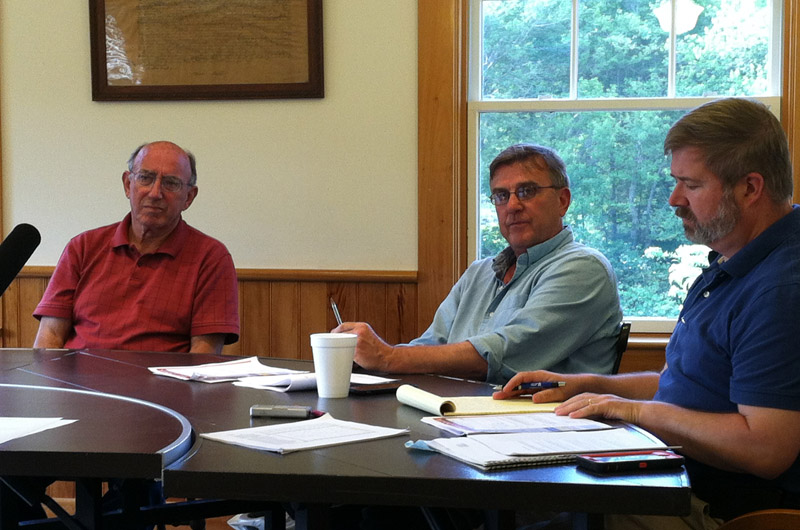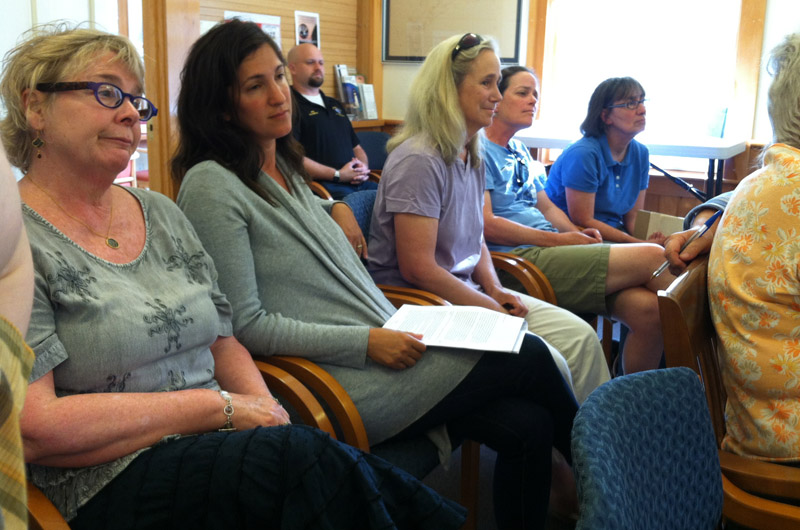Following weeks of public debate over a plan to install artificial turf fields at the Martha’s Vineyard Regional High School, the Chilmark selectmen on Tuesday voted to refer the project to the Martha’s Vineyard Commission for review.
The commission now will likely decide whether to review the project as a development of regional impact (DRI). The selectmen referred the project under the so-called discretionary referral process allowed by the MVC.
Members of the community group Vineyarders for Grass Fields appeared before the selectmen Tuesday, along with school committee member Robert Lionette and others to press for the DRI referral.
Organizers for MV@Play, a community group that aims to raise private money to create a more centralized, modern sports facility at the high school, did not attend the meeting but said later that they welcomed review by the MVC. “We are not opposed to it, we wanted to go to the Martha’s Vineyard Commission voluntarily,” said David Wallis, president of MV@Play. “But we were stunned that none of us were notified [by the Chilmark selectmen].” “ We welcome the referral to the Martha’s Vineyard Commission and in fact were in the process of making it ourselves,” wrote Matt Poole, a member of MV@Play, in a letter to the editor published in today’s edition.
The plan to refurbish the high school athletic fields has been fraught with controversy. At an emotional public meeting in May, the regional high school district committee voted 5-2 to enter into an agreement with MV@Play to replace the school’s track and field, phase one of a three-phase project. A licensing agreement has since been signed between the school district and MV@Play that spells out various responsibilities in the public-private partnership. The 15-page agreement is dense with legal language.
Meanwhile, two clear camps have formed around the artificial turf question. Proponents argue that it is more durable and easier to maintain. They also point to the poor condition of the current playing fields and the array of chemicals that would be needed to maintain a natural playing surface. Opponents of turf have strong concerns about health effects, and also have raised concerns about transparency issues in the public-private partnership between MV@Play and the school district.
Speaking to the Gazette this week, Mr. Wallis said the phase one plan involves complete restoration of the ailing track and field area at a cost of $3.5 million. The group wants to replace the track infield with artificial turf, install lights, a grandstand and a storage shed. Mr. Wallis said fundraising has only just begun, and that MV@Play has filed the necessary legal paperwork and is waiting to receive final approval as a 501c3 organization.
MV@Play also has longer-range plans that call for refurbishing other playing fields with natural grass. All the high school fields are suffering from deferred maintenance; at a recent meeting the school committee voted to spend $40,000 over the summer to patch up the fields.
On Tuesday Mr. Lionette, one of two school committee members who voted against the agreement last month, told the selectmen that he felt his committee had acted prematurely. His concerns focused mostly on health and safety, along with the high cost of installing and maintaining artificial turf and a desire to preserve the Island character. He pointed out that replacing the fields every eight to 10 years as needed could cost over $1 million per field, not including the cost of shipping the material off-Island.
“I think that we acted in haste and we acted without the full benefit of enough information,” Mr. Lionette said.
MV@Play has already switched its focus from crumb rubber, which is made from recycled tires and known to contain carcinogens, to a new type of organic infill. But opponents argue that the new material also contains toxins, including silica, a recognized carcinogen.
Rebekah Thomson, who attended the meeting Tuesday on behalf of Vineyarders for Grass Fields, argued that the term organic was misleading and that the new material has not been adequately tested. She listed several criteria that she said would qualify the project as a DRI, including the presence of contaminants, possible effects of storm water runoff, removal of topsoil, and the possibility of altering the experience of playing sports on the Island. In addition to the new fields, she said the plan for new stadium lights and other structures could also trigger items in the DRI checklist.
The group had planned to ask all six Island towns to refer the project to the MVC, but two weeks ago the Tisbury selectmen decided to take no action, deferring to the Oak Bluffs selectmen, who in turn voted to table the request with no discussion.
Chilmark selectman Bill Rossi said he would prefer to see the DRI referral come from all six Island towns in order to send a clearer message. But he and selectman Warren Doty both expressed strong reservations about the MV@Play proposal.
“The idea of artificial turf I can’t quite grasp,” Mr. Rossi said, recalling his days playing on the ball fields at the high school. Mr. Doty recalled Chilmark’s earlier experience with crumb rubber in the playground behind the community center, which he said left black marks on children’s knees and was later replaced with wood chips.
“The rubber crumb idea is terrible,” he said. “And we went to great effort to remove it all.”
Selectman Jim Malkin did not attend the meeting.
Chilmark planning board member Janet Widener said she was amazed that a 40-acre development would have such little review. “It seems like a project that cries out for evaluation,” she said, noting concerns about traffic and lighting. “The idea that this is not being looked at already by the Oak Bluffs planning board is amazing to me. I suspect that the developers would say this is only phase one, we’ll get to that eventually. But it seems to be important to look at the big picture now . . . they must have an idea of where they want to put things.”
Clarissa Allen, who serves on several committees in Chilmark, said that while the school committee had regional oversight, it might not look as deeply at the environmental impacts of artificial turf. “[The MVC] can bring in all that knowledge,” she said.









Comments (5)
Comments
Comment policy »